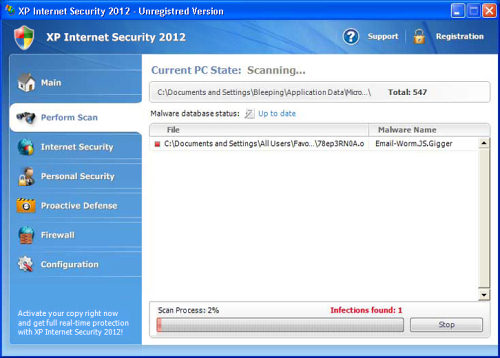
Easiest Removal Option:
Remote Repair: Paying an expert to remove this threat is always the easiest option. It’s also the most expensive. PCTechGuide.com has reviewed several remote computer repair companies and we recommend http://www.pcninja.com This is a small computer repair company (Two brick and motar stores in California ). Small companies like this tend to deliver better customer service. With a fully trained and experienced staff all based in California doing the repairs, you can’t go wrong. The cost for most virus removal services is around $99 USD.
Software Option:
Antivirus Clients: Anti-Virus software was developed to remove these exact kind of threats. Most people who get infected with malware get infected from having no protection or from using a free client that offered no real up front protection. It’s important to secure your computer so know one gains access to it and to protect your identity online.
PCTechGuide.com has reviewed hundreds of software vendors over the years. See our Antivirus Reviews and Internet security reviews for full in-depth reviews.
To Remove this virus we recommend Spyware Doctor with Antivirus or Malwarebytes. All three offer good results in most cases.
Do It Yourself Removal Guide
How to remove XP Internet Security 2012 DIY Steps.
Proceed with Caution. PCTechGuide.com offers this information free of charge. We can not be held liable for any actions you take regarding the below information. Always backup your data first. It is advanced that you use an anti-virus client to remove the virus threat or hire a professional out like http://www.pcninja.com
Step 1. You need to stop the virus executable from running. Once you stop this you will be able to delete the file and gain back your computer. Here are some helpful hints to remove the XP Internet Security 2012 executable
A. Boot into safe mode with networking. When booting into safe mode you should no longer have this virus running and can just delete the file. This works best for most people. The file path for this threat is
XP: XP Internet Security 2012 executable path:
C:Documents and SettingsYour User NameApplication Data
C:Documents and SettingsYour User NameLocal SettingsApplication Data
Win 7 / Vista: XP Internet Security 2012 executable path:
C:UsersYOUR USER NAMEAppDataLocalRandomFileName.exe
See How to Boot into Safe mode if you don’t know how this is done
B. Browse to the file path shown above and re-name the file. By re-naming the file, the next time you start up your computer the virus will not start because the name will be different. You can then delete the re-named file after you have re-started your computer. For more information see the how to re-name a file guide.
C. When you are in the above folder you can sort the files by the data modified. This helps if you are un-sure the file name or executable of the file. You can eliminate almost all files by sorting them by date. Find the virus executable and re-name it.
D. Open up the Task Manager to locate the name of the virus and the location of the threat. Once you have located the file path and name of the executable file you can terminate that process and delete the virus executable.
Step 2. Delete the file name if you have not already done so. Keep in mind that you will need to re-start your computer in order to remove the name in most cases. You can not remove files that are in use
Step 3. Run an anti-virus scan. This is a must step. You may still have registry keys that are corrupt and damage done to the operating system that needs to be repaired. As stated we recommend you use Stopzilla or Spyware Doctor with Ant-virus. Please note that the trial versions will not remove items found. They will in many cases block new threats and show you what you are infected with. Use the free scan to at least ensure you have no other infections. If you like the security client we recommend you make a purchase.
How not to Get Infected Again
In most cases users get infected with viruses and malware from not having propper up-front protection. Computer security experts recommend that you use an anti-virus client that offers up front protection to block viruses from installing and a security client that keeps up to date with the latest virus defenitions. The paid versions of Spyware Doctor with Antivirus and Malwarebytes fit this criteria. Going with one of these clients is a step in the right direction to protecting your computer.
Need More Help? Want to Say Thanks?
Ask questions or post your comments below. Thank You.
Discalimer: PCTechGuide.com does make money from users who make a purchase of many of the products and services featured on this website.
nice
I have this but it is now enhanced to block safe mode operation. Any suggestions?
Go figure right!
What is your operating System? What I would recommend is locating the file name and then re-naming the file. In the guide we list a few different paths. Keep in mind you can not delete a file while it is running. After you re-name the file then re-boot your computer and you should be able to then delete it.
You can also attempt to do a system restore and restore your computer to a date when you where not infected then run a full scan.